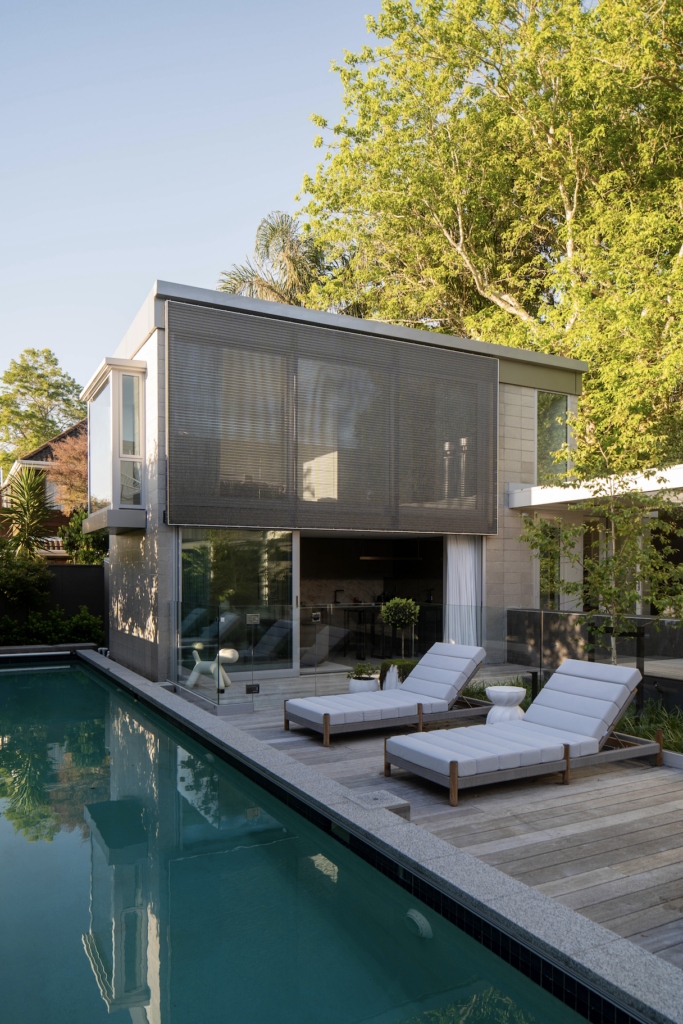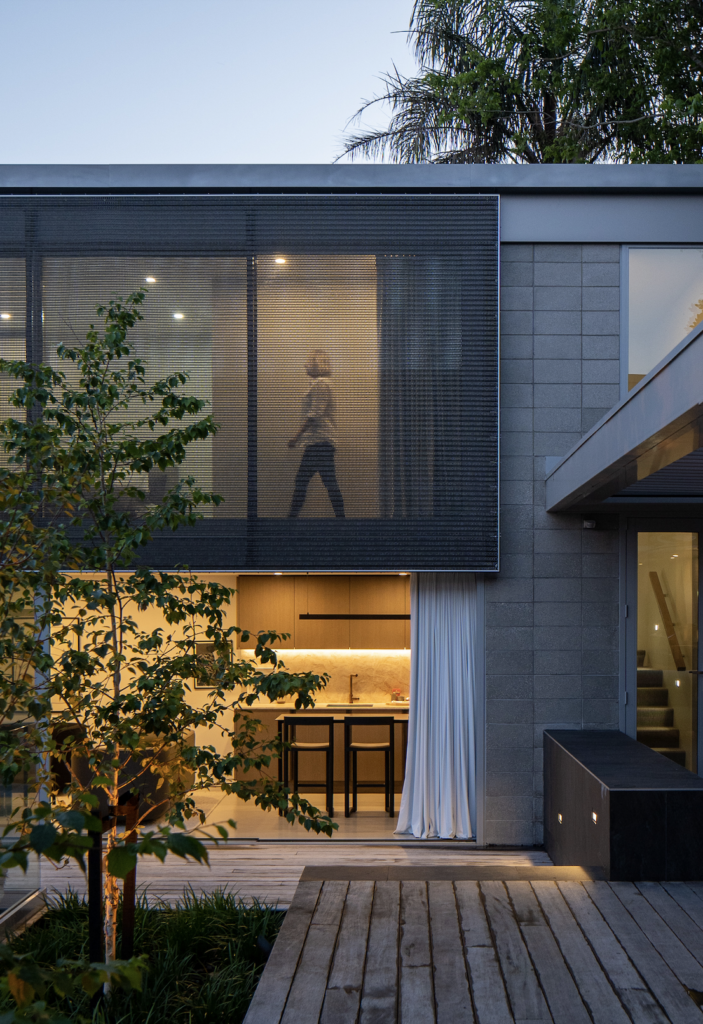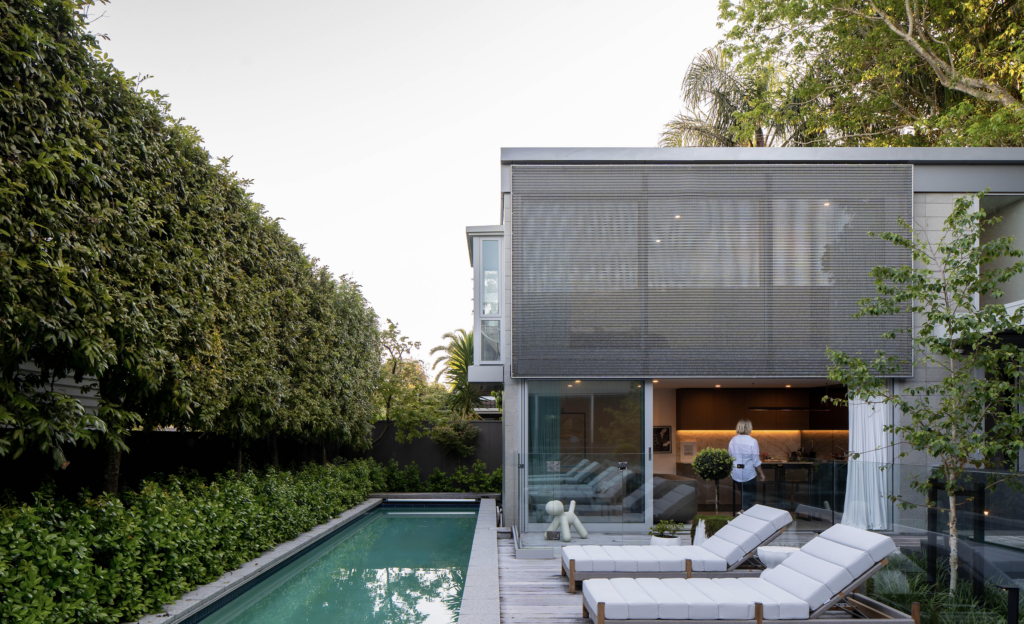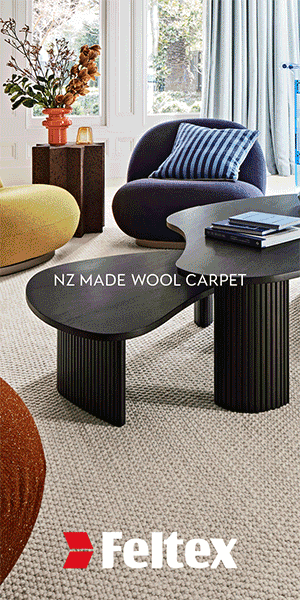The reinvention of a material traditionally used as armour into a contemporary architectural fabric used for everything from solar screening to dividing and defining interior spaces, and creating kinetic sculptures is a story that begins in the costumery department of the Lord of the Rings film set.

When searching for a solution to replicate ancient chainmail armour, Kayne Horsham devised a modern, lightweight alternative; armour crafted from small, interlinked polycarbonate rings. Following the success of the initiative, he went on to pitch the idea to some of the world’s largest fashion houses with great success. He realised there was potential that went further than couture and turned his focus to building facades.
Fast forward a couple of decades and Kaynemaile has become a mainstay in architectural solutions both here and globally. It can be used in place of steel sheets or mesh; it keeps the sunlight out while keeping visibility clear, reducing the solar energy entering a building. It’s UV stabilised so it won’t go brittle, it’s fire resistant and stronger but lighter than glass. Across residential and commercial settings, it’s a go-to for everything from car park facades to office dividers, airport security screening, art installations and decorative additions.
As Kaynemaile’s Aaron Te One puts it: “Thanks to its unique polycarbonate composition and our proprietary manufacturing process, we like to say that, for residential applications, Kaynemaile offers not only an attractive alternative to traditional materials such as metal, aluminium and even timber, but that it also has benefits that exceed a lot of those traditional materials.
“For example, when used externally, Kaynemaile acts as both a solar screening device – reducing solar gain by as much as 70 per cent, without significantly impeding air flow – and as a decorative element, so, not only do you get some impressive performance attributes, but then on top of that, the aesthetic value is the icing on the cake.”

The reinvention of chainmail
“In a time of increasing environmental challenges and growing concerns around climate change, more and more consumers and professionals are looking for sustainable solutions that don’t compromise on quality and aesthetics.
“When Kayne Horsham re-invented chainmail by utilising polycarbonate back in 2007, he believed that we could create a product that embodied the idea of material reuse. It’s taken a while for the technology to catch up but now there is RE/8, an industry-first, cradle-to-gate carbon-neutral polycarbonate.
“The base polymer we use is developed by German-based Covestro, a leading global producer of advanced polymers. With this we make our RE/8 bio-circular architectural mesh which is reusable and 100 per cent recyclable across its entire lifecycle. Our product is made from a much-higher grade polymer and as such has an extended lifespan more suited to our harsh local conditions.”

Kinetic, three-dimensional forms
One of Kaynemaile’s main attributes is its lightweight nature. Weighing in at just 3kgs/m2, Kaynemaile is significantly lighter than its alternatives. This allows for greater coverage in a single piece screen – the company has previously installed a 50-metre-high screen on a Wellington hotel.
“Our in-house team is dedicated to working with architects and designers from the concept stage of a project right through to the installation,” says Aaron. “Obviously, the sooner we’re involved the better as it allows for a whole range of possibilities at the ‘napkin sketch’ stage that other materials just can’t do.
“And then, of course, there’s the fact that the product itself is unique in that it’s not a rigid panel as such, it is very kinetic, it’s always moving. This means we have the ability to manipulate it over shaped sub frames, and that’s where you can achieve those interesting three-dimensional forms that we’re getting well known for.”
Kaynemaile is available in a range of standard exterior or interior colours and the team can work with customers to create custom colours as well.
“Being a polycarbonate material, the colour possibilities are almost endless. However, in order to streamline the process, we developed an interior and exterior colour range that we thought would work with most projects and we’ve found that this has worked out pretty well, but yes, depending on the scope of the project we can create a huge range of custom colours.”
Kaynemaile products are made to order in the company’s Petone facility and carry a 10-year warranty.





